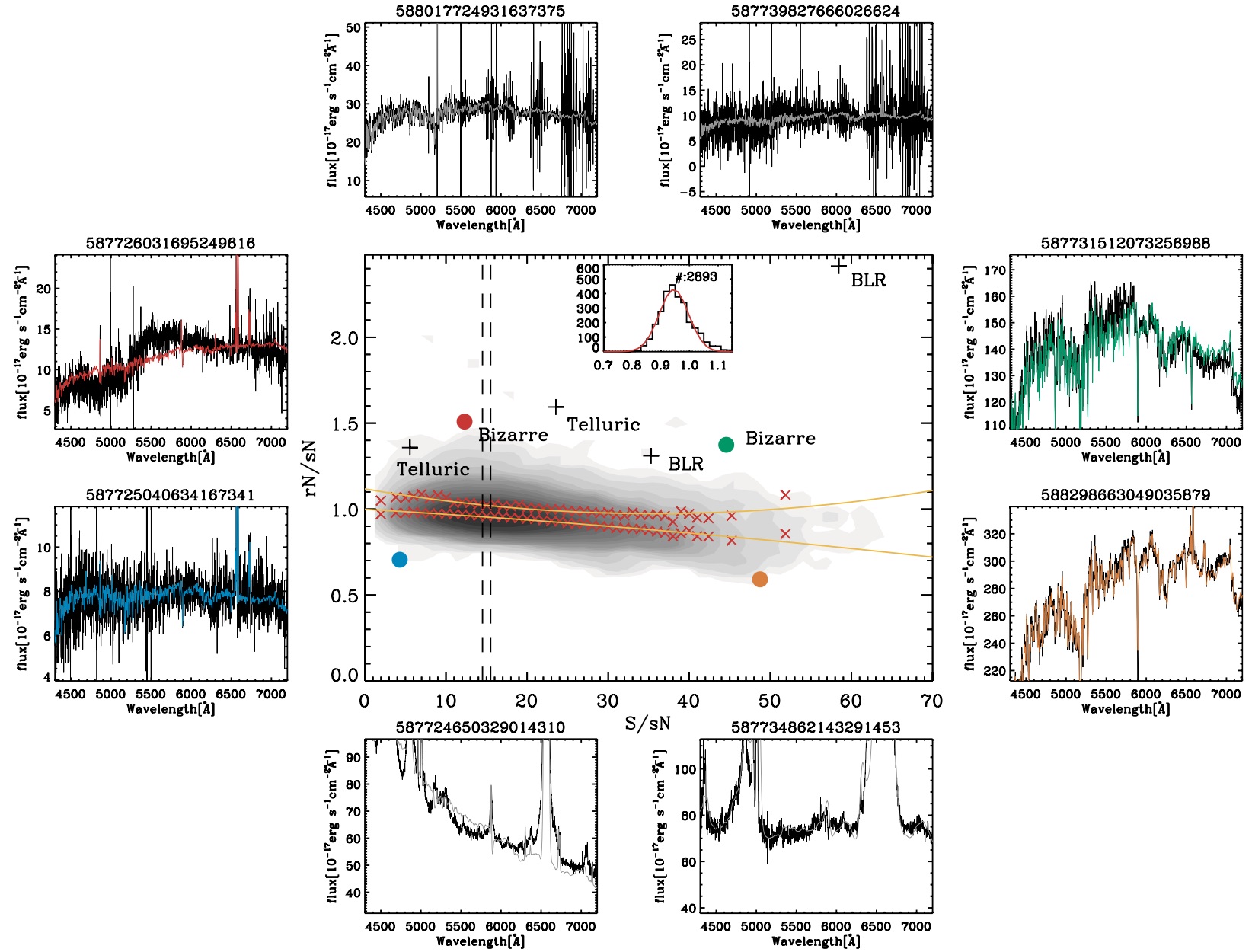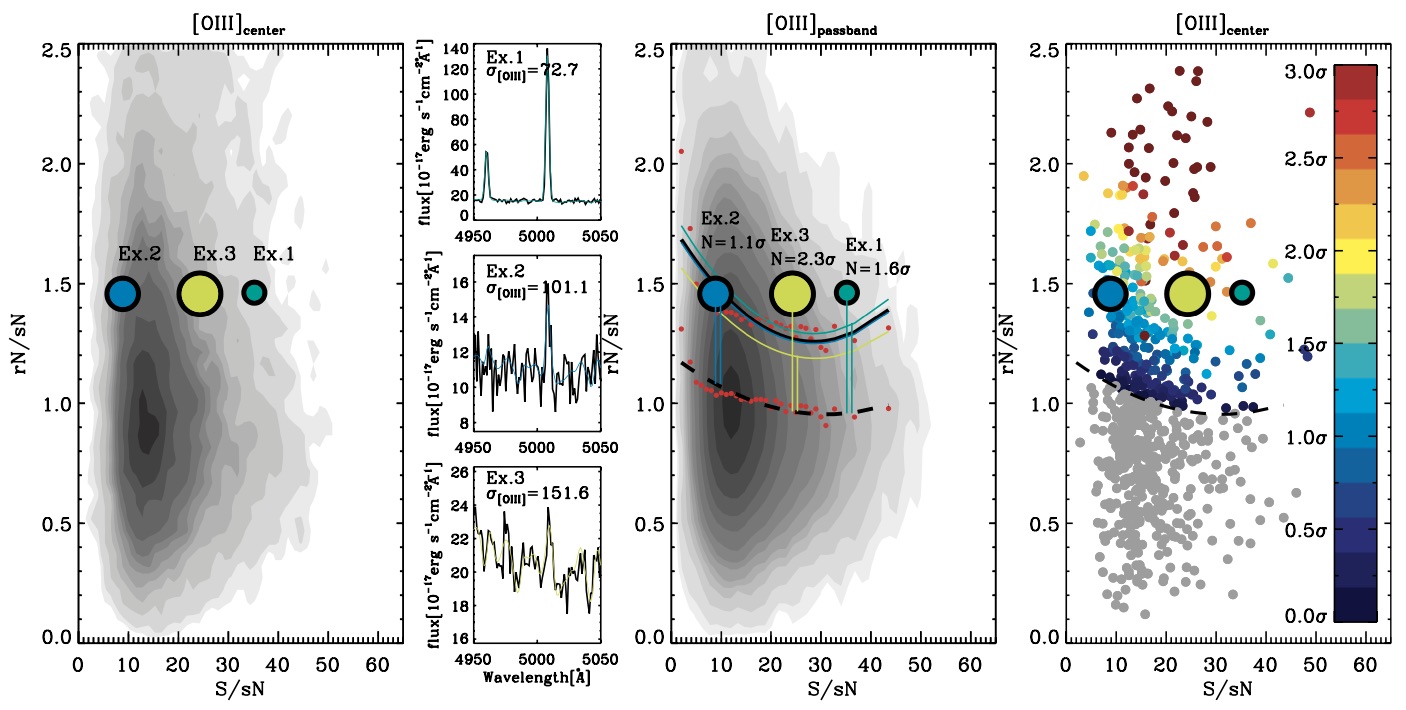Fitting Quality Assessment
"High Signal-to-Noise ratio does not always guarantee a good fit"
Assessing the quality of our fits to the SDSS spectra is a key to the accuracy of our measurements for the stellar and gaseous kinematics, as well as for the strengths of both the emission and absorption lines. An inadequate model for the observed spectrum, or artificial features in the data themselves is likely to introduce biases to the measured parameters that are not accounted for by our formal errors. Such parameters are affected in different ways by data mismatches. For the stellar kinematics, and in particular for the velocity dispersion, the most crucial match is the stellar continuum across the entire wavelength range, whereas the accuracy of the emission-line parameters (and of the absorption-line indices that are affected by nebular emission) are more sensitive to the quality of the fit in more localized spectral regions around the emission lines. The quality of the data, as routinely estimated by dividing the average level of the flux density (hereafter S, for signal) by the level of the formal uncertainties for the latter (hereafter sN, for statistical noise), does not guarantee a good fit. Artifacts introduced during data reduction may not be picked up by such an S/sN ratio, whereas a severe template mismatch to the stellar continuum or the presence of additional components in the nebular spectrum (e.g., a Broad Line Region or Wolf-Rayet features that are not included in our standard fitting procedure) may lead to biased results, even in a case of excellent data. A more direct way to assess the quality of our model would be to compare the level of fluctuations in the fit residuals (hereafter rN, for residual noise) to the expected statistical fluctuations, sN. A rN/sN ratio close to unity indicates a good fit, as this ration corresponds to a reduced Χ2, which is also close to 1.

